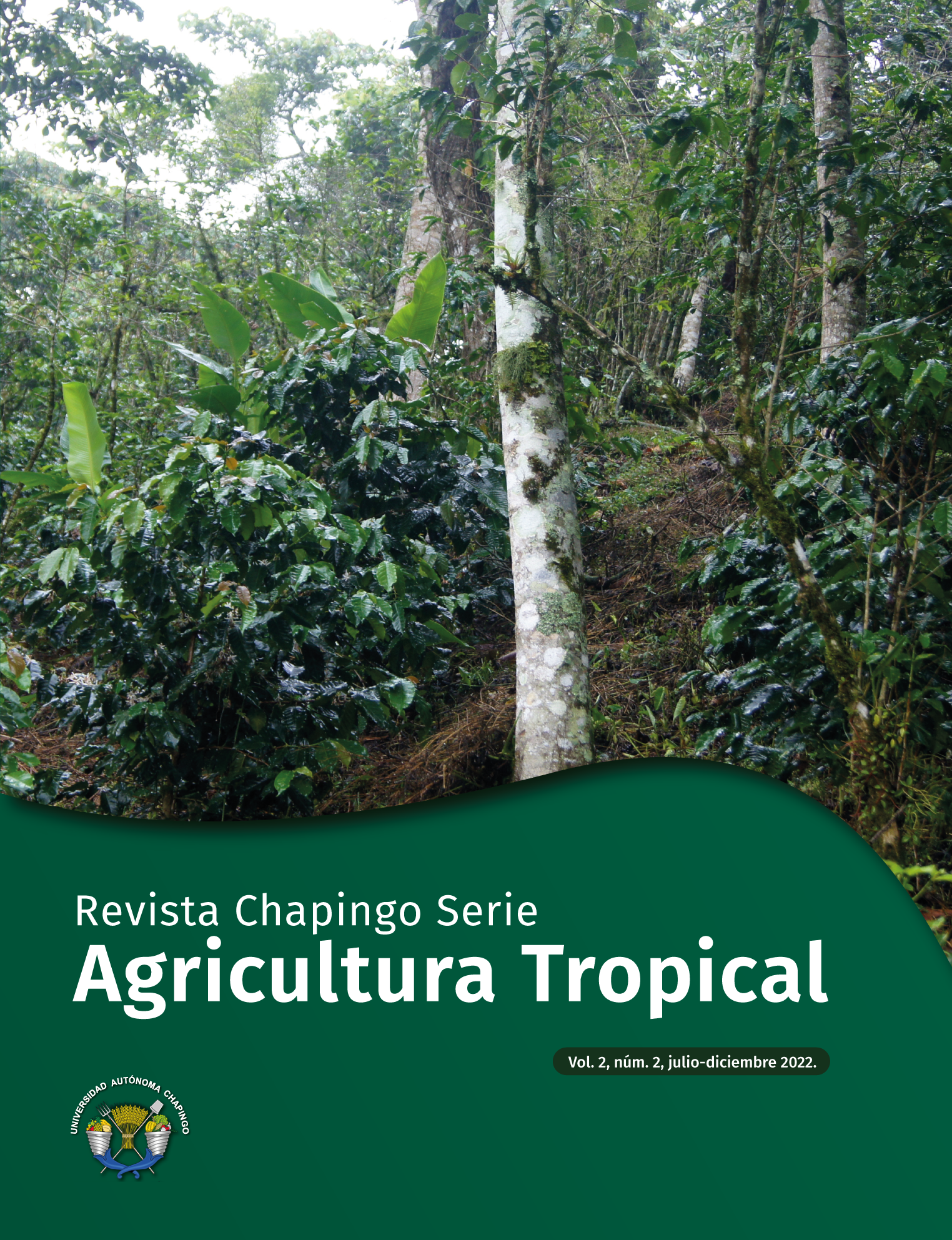Abstract
Coffee from the Otomí-Tepehua region in the state of Hidalgo is not widespread and marketing is difficult due to access to the region. Given this, producers decide to sell their production to intermediaries despite its low price. Coffee plantations in indigenous areas provide environmental services that are important in the region, such as the protection and conservation of biodiversity. The objective of this work is to characterize the coffee of the region with the criteria shade coffee, protection of biodiversity and bird friendly coffee according to the methodology proposed by the Smithsonian Institution. Sites of 2000 m2 were surveyed within the coffee plantations, taking the emergent tree as the center to count the specimens and carry out dasometric, ecological and biological observations. 14 tree species were recorded, the most abundant being the chalahuite (Inga spuria) and the rarest the zopilote (Platimicium spp.), with the presence of epiphytes such as orchids and bromeliads, nests and burrows, which in addition to providing shade, protect the wild fauna and flora. One of the trees with the greatest presence of nests was the chalame (Ficus cotinifolia).
References
Anta, F. S. (2006). El café de sombra: un ejemplo de pago por servicio ambientales para proteger la biodiversidad. Gaceta ecológica, (80), 19-31. https://www.redalyc.org/pdf/539/53908002.pdf
Becerra M., A. (2000). Los recursos naturales renovables de México y sus procesos de deterioro. Primera edición. Universidad Autónoma Chapingo. Chapingo, México.
Castelán, L. M. (2016). Diversidad arbórea y silvicultura comunitaria en la región chatina de Oaxaca. En Ramos-Escamilla, M. (Ed.), Desarrollo económico en México (pp. 105-111). ECORFAN. México. https://n9.cl/p7ct1
Estrada, A. y Coates-Estrada, R. (1999). Las selvas tropicales húmedas de México: Recurso poderoso, pero vulnerable. Fondo de Cultura Económica. Serie la ciencia desde México. México.
García, E. (2004). Modificaciones al sistema de clasificación climática de Köppen. 5ta. Ed. Instituto de Geografía. UNAM. México.
Granados, S. D., López, R. G. F., Hernández, G. M.A. y Sánchez, G. A. (2003). Ecología de las plantas epífitas. Revista Chapingo. Serie Ciencias Forestales y del Ambiente, 9 (2), 101-111. https://www.redalyc.org/pdf/629/62913142001.pdf
Jiménez T., L. A. Vásquez V., S.L. (2008). Reserva de la biósfera “Los Tuxtlas”, patrimonio ecológico amenazado. https://n9.cl/g4va1
Manson, R. H, Contreras, H. A. y López, B. F. (2008). Estudios de la biodiversidad en cafetales. En: R. Manson H., V. Hernández-Ortiz, S. Gallina y K. Mehltreter (Eds.), Agroecosistemas cafetaleros de Veracruz, biodiversidad, manejo y conservación (pp. 1-14). INECOL. México. https://n9.cl/xq2r5
Miranda, F. y Hernández X., E. (1963). Los tipos de vegetación de México y su clasificación. Colegio de Posgraduados, Escuela Nacional de Agricultura. Chapingo, México.
Moguel, P. y Toledo, V. M. (1996). El café en México, ecología, cultura indígena y sustentabilidad. Ciencias (43), 40-51. http://revistas.unam.mx/index.php/cns/article/viewFile/11519/10844
Regalado, O. A. (2015). ¿Qué es la calidad en el café? Universidad Autónoma Chapingo. Chapingo, México.
Rice R. A. y Drenning J. (2003). Manual de café bajo sombra. Smithsonian Migratory Bird Center. Washington D.C.
Ruelas, M. L. C., Nava, T. M. E. Cervantes, J. y Barradas L. V. (2014). Importancia ambiental de los agroecosistemas cafetaleros bajo sombra en la zona central del estado de Veracruz, México. Madera y Bosques, 20 (3), 27-40. http://www.scielo.org.mx/pdf/mb/v20n3/v20n3a3.pdf
Rzedowski, J. (1988). Vegetación de México. LIMUSA. México, D.F.
Toledo, V. M. (1990). La perspectiva etnoecológica. Cinco reflexiones acerca de las “ciencias campesinas” sobre la naturaleza con especial referencia a México. Ciencias, (4), 22-29. http://www.ejournal.unam.mx/cns/espno04/CNSE0404.pdf
Villavicencio, N. M. A. y Pérez, E. B. E. (2005). Guía de la flora útil de la Huasteca y la zona Otomí-Tepehua, Hidalgo I. Universidad Autónoma del Estado de Hidalgo. México.

This work is licensed under a Creative Commons Attribution-NonCommercial 4.0 International License.
Copyright (c) 2022 Revista Chapingo Serie Agricultura Tropical




